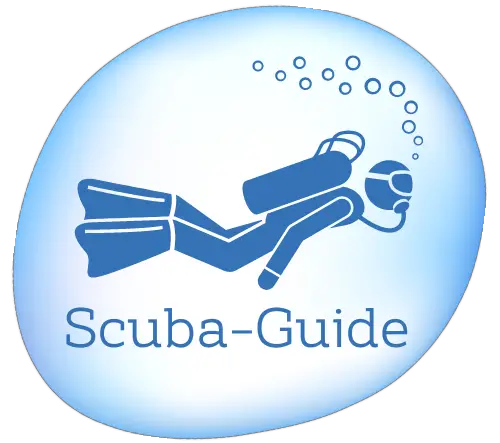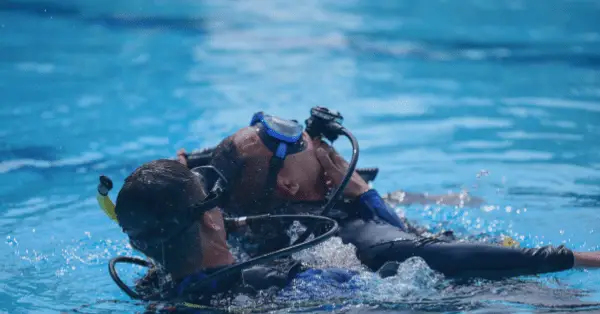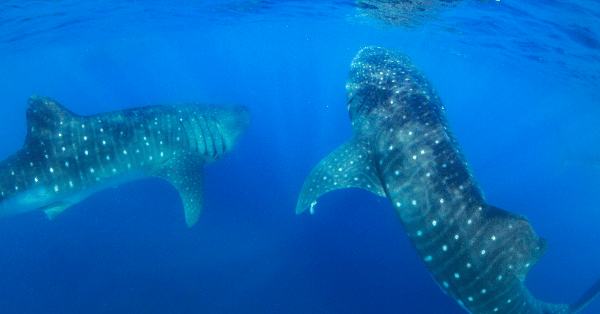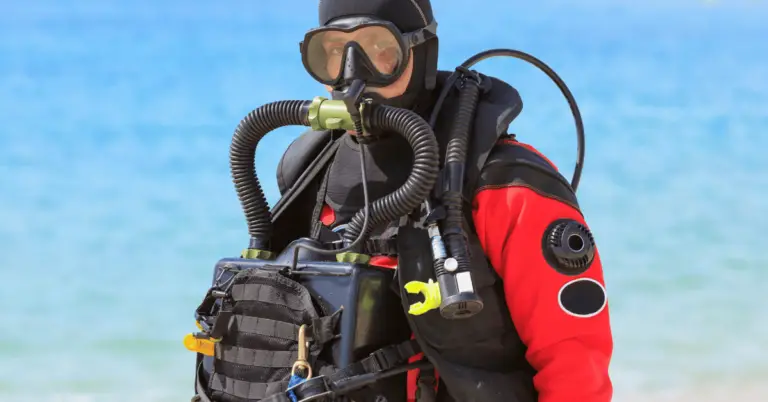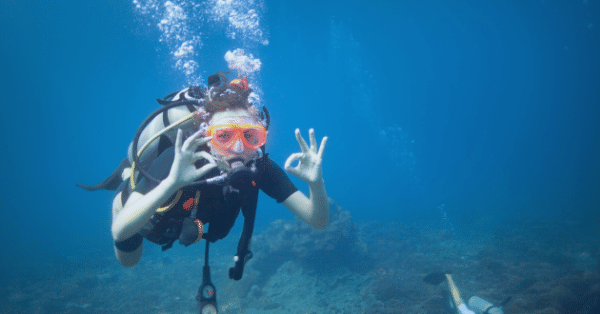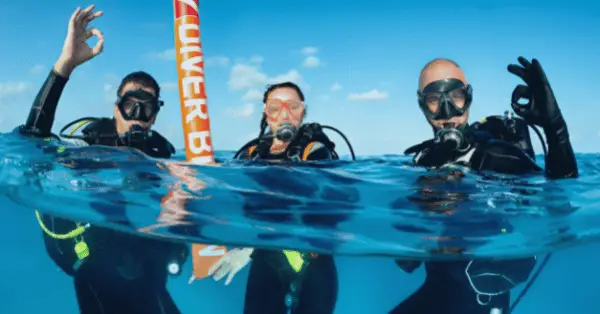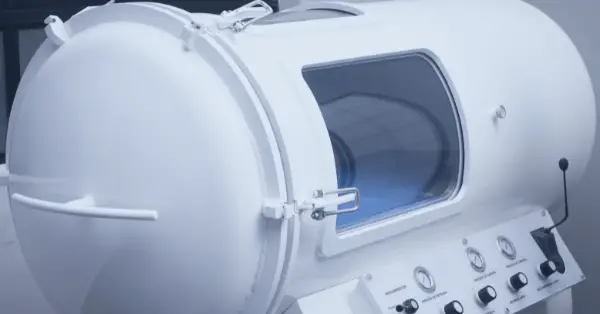What is a diving boat and what are the different types?
A diving boat is a vessel that is specially designed and equipped for scuba diving activities. It typically has features such as abundant deck space, railing, ladders, steps, and easy access to the water. The vessel may also be equipped with tanks of air stored on board and tools/equipment needed to support diving activities. Depending on the size of the vessel, it may accommodate anywhere from two to dozens of divers at once.
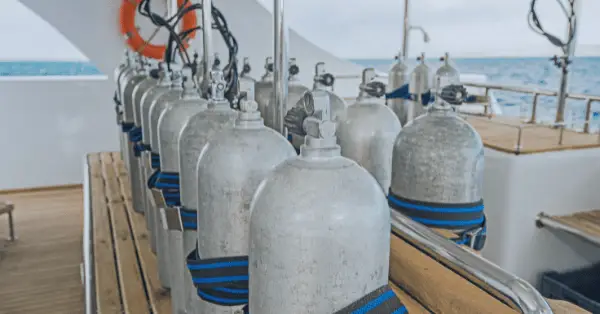
Types of diving boats
On board of larger diving boats, you can expect amenities such as food and beverage services, comfortable seating areas, restrooms, and storage areas for your gear and backup equipment in case a valve breaks or equipment gets lost. You will also find an experienced crew capable of assisting with safety protocols and providing information about diving locations or sites nearby. Once it’s time to dive, you’ll find a platform for easy entry and exit from the water and plenty of support available to ensure your safety. You can also expect plenty of fun activities during surface intervals or time between dives.
Smaller dive boats can be sometimes very rudimental and are used as shuttles to bigger boats or to navigate shallow reefs larger boats can’t reach.
Generally speaking, the further the dive site is from the shore or dive center the larger the boat.
Small inflatables and RIB diving boats
From portable dinghies to bigger Rigid Inflatable Boats (RIBs), these are fast, maneuverable, and can reach places larger boats can’t.
Usually, divers enter the small boats already fully geared and ready to jump in. Divers are often sitting on the edge. The only way to enter the water is by rolling backward off the boat’s edge.
In order to get back onto the boat after your dive, someone on the boat will need to assist you.
Because of limited space, dingies and RIBs are used for single dives.
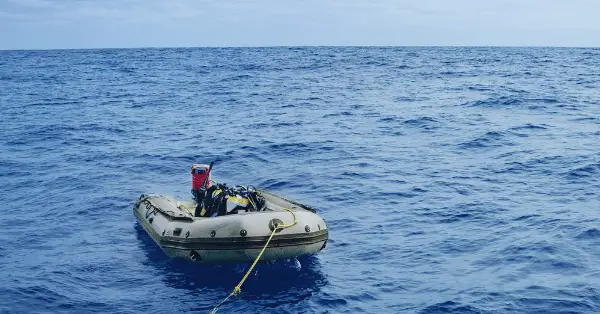
Long-tail diving boats
Long-tail boats are famously used for scuba diving in Thailand for example. They can be used as shuttles to bigger boats, but also function as fully equipped diving boats bringing groups to nearby dive spots. Similarly to small inflatables, long-tail dive boats can navigate shallow water and lagoons, making them perfect to bring divers to protected reefs.
Open rigid hulled boats
These boats offer the same function as Rigid-hulled inflatable vessels, except they don’t include inflatable tubes. They are sturdier in comparison but typically heavier for their load capacity. Although they are also not easy to climb onto like the equivalent inflated boat, these boats are lightweight and more durable while still being cost-effective.
Decked diving boats
While any of the previously mentioned (besides the RIBs and dingies) could be equipped with a deck, we will list decked diving boats separately. Decked dive boats are usually one category bigger and often have already dedicated sitting and storage areas. Often they also have already platforms to step into the water.
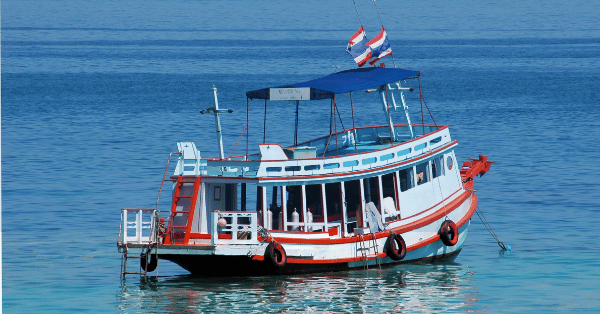
Day dive boat
Day diving boats are usually made of rigid materials (hard boats). They are larger in size (between 60 to 90 feet or 18 to 27 meters in length) and have multiple levels to fit more people, carry more equipment, and can reach farther dive sites. They can also navigate the open sea with taller waves.
Catamaran diving boat
Catamarans are famous for two hulls. These two hulls are connected by a bridge deck. Catamaran diving boats can be usually found in areas with calmer waters. They also have a feel of luxury. It’s not uncommon that catamaran boats to carry or pull a small inflatable boat with them.
Scuba diving liveaboard
A liveaboard is a diving boat that – as the same indicates already – gives divers the opportunity to live aboard. The boats are equipped with sleeping cabins, hangout areas, storage, restrooms, and a kitchen. Liveaboards are designed for multi-day recreational scuba diving trips. In most cases, they can accommodate anywhere between 10 and 30 passengers and crew members.
Often divers can conduct 5 or 6 divers per day. Liveaboard diving boats are often found in popular diving areas that are within reach of each other, like the Galapagos Islands, Hawaii, Indonesia, or the Red Sea.
Often liveaboards boats also have a diving support vessel such as an inflatable diving boat.
Diving boat FAQs
What is a scuba diving liveaboard boat?
A liveaboard diving boat is a vessel that divers can live on for a multi-day scuba diving adventure. Divers and crew members are accommodated in dedicated sleeping cabins. Liveaboards also have everything that’s needed for living on the ocean from a kitchen and storage, to advanced diving facilities like compressors to fill tanks with the air mixture and even decompression chambers for emergencies.
Liveaboards are also reaching remote dive sites. On such trips, divers add many dives to their log book and get to know the group very well. It’s not uncommon that divers hit their 100th dive benchmark and conduct a naked dive.
How to recognize a dive boat?
First and foremost, scuba dive boats have to carry the distinct red diver down flag with the white diagonal stripe. Additionally, they usually have a big scuba diving logo and contact information written on them for marketing purposes.
Lastly, in many cases, you will see scuba diving gear such as tanks and wetsuits in abundance on those diving boats.
Conclusion
Overall, a diving boat provides an ideal environment for enjoying your scuba diving experience safely and comfortably. It’s important that you assess each vessel thoroughly before making any decisions about which one will be best for your needs. Regardless of what type of vessel you choose, it should always provide a safe and enjoyable experience with all the necessary amenities to make your dive memorable.
